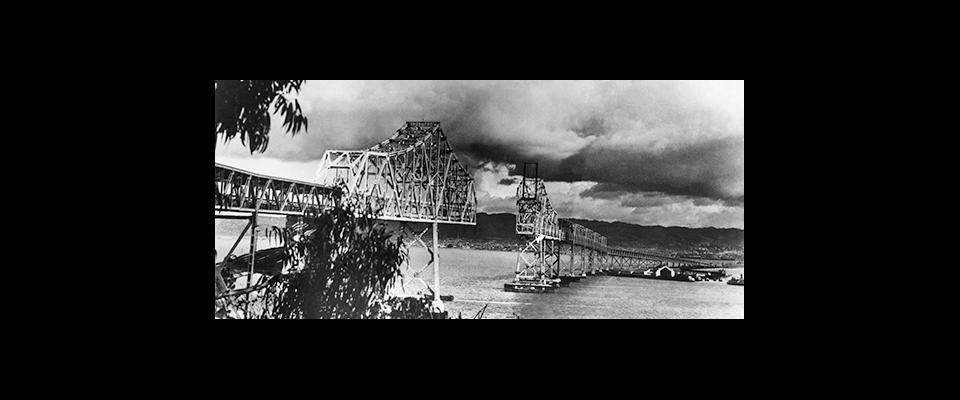Collapsed freeway is just the beginning
Abolhassan Astaneh won’t drive over the repaired portion of the MacArthur Maze until Caltrans proves it’s safe. The Berkeley professor of structural engineering has investigated disasters all over the world, including the collapse of the World Trade Center, and says that most of what you read about the successful reconstruction of the freeway interchange at the eastern end of the Bay Bridge is plain wrong.
“You cannot use used steel, you cannot use weaker steel, you cannot use the damaged pillars that have experienced 1,500 degree temperatures, and you cannot open the bridge until you have the safety calculations in place,” says Astaneh, the National Science Foundation’s lead researcher into the April collapse of the Maze. “These are our findings, and they do not look good for Caltrans.”
Astaneh’s voice rises in frustration as he explains that contractor C.C. Myers used leftover Bay Bridge “junkyard” steel, which is weaker than new steel, to repair the collapsed highway and left several fire-damaged pillars standing, instead of replacing them with new ones. Caltrans also overestimated the time needed to fix the bridge by about five weeks, he says, then promised the contractor a $200,000 bonus for each day sooner than the Caltrans estimation the project was finished. The bonus was capped at $5 million, all of which C.C. Myers received.
“As far as contracting, bidding, making sure design and bidding and contractors do it right—it was a disaster,” Astaneh says. When the Maze was reopened, Caltrans engineers dismissed his criticisms, saying they were certain the structure was safe; when Astaneh speaks about it, he defensively mentions his own credentials and the integrity of the organizations he represents. In a statement, Caltrans spokesperson Lauren Wonder said the agency would consider advice from researchers, but did not mention Astaneh by name.
Astaneh and his colleagues from the Center for Catastrophic Risk Management have investigated more than 600 disasters, including the Exxon Valdez, the 1994 Northridge earthquake, the crash of the Concorde jet near Paris, and Hurricane Katrina. And they say they’ve found a common theme: hubris beforehand, hubris afterward, and a lot of things not working in between.
Robert Bea, co-director of the CCRM, sees troubling parallels between the Maze reconstruction and Hurricane Katrina. (See “Mudpies in the sky,” p. 55.) He went to New Orleans and watched workers on a tight deadline putting bad soil back in the same levees that were breached by the hurricane because of their poor construction. “They said, ‘gotta fix it, gotta fix it fast, damn the torpedoes, let’s fix it,'” he says. “And that’s what happened.”
Bea keeps a framed picture on his desk, a parody that splices a photo of President Bush playing guitar the day after the levees broke with a photo of a crying woman holding her child outside the Superdome, to serve as a reminder of the government’s response to that catastrophe. He hopes to use the Center’s research to avoid future catastrophes, and says the reconstruction of damaged levees in the Sacramento River Delta— before a major disaster—is a promising sign. Most encouraging, the work and experience of CCRM researcher Raymond Seed, a lead researcher on Katrina, persuaded a lot of people of the value of a multi-billion-dollar reconstruction effort in the Central Valley.
Still, Caltrans’s reaction to the Maze meltdown left Bea and Astaneh disappointed.
“Their response?” Bea says, laughing.
He covers his ears with his hands.
“Go away!” he shouts. “Go away! Go away!”



















